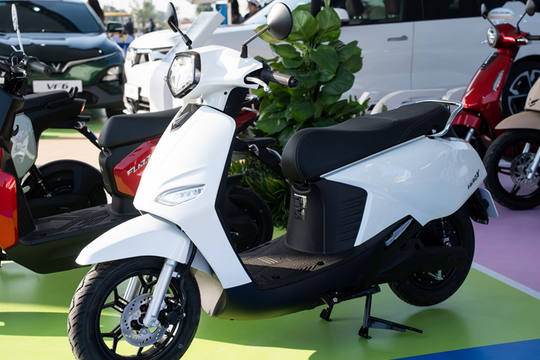"Dilemmatic"
Regarding competitive capabilities, even large Vietnamese logistics enterprises face many challenges as trade barriers are lifted and competition becomes global. Especially for small and medium-sized logistics enterprises, it is even more difficult to compete.

In addition, limited financial resources are also a factor that hinders the competitive capacity of small and medium-sized logistics enterprises. This impedes the enterprises from investing in research and development (R&D) of scientific and technological knowledge. Technology, whether purchased or self-researched and developed, can create new and superior products, such as cargo classification technology, warehouse management, and create customer satisfaction, thereby creating a competitive advantage. However, small and medium-sized logistics enterprises do not have enough resources to invest in this field.
Due to limited financial resources, small and medium-sized logistics enterprises cannot promote their brand and services through various media channels to reach customers, especially in foreign markets.
The first weakness of small and medium-sized logistics enterprises is their relatively low application of scientific and technological knowledge. However, technology, especially digitalization, is the key to enhancing the competitive position of logistics services. With the rapid development of e-commerce and e-logistics, technology is the top competitive advantage of logistics services.
Unlike large logistics enterprises that have created barriers to technology and finance, small and medium-sized logistics enterprises face no barriers to financial capacity, experience or technological secrets when entering the market. Therefore, the number of competitors in this group is extremely large, and the level of competition is very fierce. Many small and medium-sized logistics enterprises have been established with capital of a few hundred million, and 3-5 employees have created a very dynamic competitive market. However, the ease of entry into the market, combined with weak management capacity, has led many enterprises to not survive after a short period due to high competitive pressure.

One noticeable thing about small and medium- sized logistics enterprises is that due to their small scale and limited financial capacity, most of these enterprises become subcontractors for other subcontractors rather than having direct relationships with customers, shipping companies, transport units, warehouse management units, leading to high costs and difficulty in competing.
It is still possible to make a "smart choice"
Small and medium-sized logistics businesses do not
have many competitive advantages compared to
large logistics corporations, but they still have many
advantages based on their small scale. First of all,
due to their small size, their business processes are
simple, so decision- making is very fast and can meet the urgent needs of customers. They can decide on pricing and accept low profit margins to compete because their management costs are low. Meanwhile, large logistics corporations have structured and professional transport, pricing, and customer care processes, so they need time to follow their procedures and hierarchy. With fewer staff members, small and medium-sized logistics businesses can make quick decisions and respond almost immediately to customer needs.
Small and medium-sized logistics businesses can choose niche markets and specific segments that large businesses cannot or cannot efficiently handle. Small orders with low revenue and profit margins are often overlooked by large logistics corporations, so they are an area where small and medium-sized logistics businesses can participate and compete.

To compete with companies of similar size, small and medium-sized logistics businesses can only survive by providing quality services such as safety, on-time delivery, customer satisfaction and competitive pricing through effective cost management.
Small and medium-sized logistics businesses need to rely on their joint venture partnerships to create competitive strengths. With the advantage of having thousands of businesses spread across many geographical areas and engaged in various fields, small and medium-sized businesses can support each other in the logistics chain, such as delivery, transportation, customs clearance, and storage. This is a competitive advantage that no large logistics corporation can achieve because it requires significant investment to establish such a system.
In terms of the government, in addition to
supporting policies such as preferential loans, land
leases, and taxes, the government needs to create
a fair playing field for small and medium-sized
logistics businesses, especially in bidding policies.
Recently, many investors have placed barriers
such as financial requirements, annual revenue
and profit, or capacity and experience to prevent
small and medium-sized logistics businesses from
participating in bids, creating a monopoly for large
logistics corporation
(*) FSB Institute of Management and Technology – FPT University





.png)
.png)
.png)
.png)




.png)

.png)




